Pheew, it feels genuinely good to present this fresh and exciting insight and story with some great images from a relatively unknown part of our world, Louis Meunier´s and Paley Matthieu´s Pamir of Afghanistan, after the last report about unsupported and such really not so interesting things. A story like that brings out the biggest of egos. As one readers noted, most of the readers of my blog prefer these stories as below. Documentary maker and Long Rider Louis Meunier is a genuinely good guy who puts a lot of effort into putting Afghanistan on the map as a great destination for adventure and exploration again. And he is working on a film called the Prisoners of the Himalaya, of which he tells more below.
The Kyrgyz of the Afghan Pamir
by
Louis Meunier
(Images Copyright of Paley Matthieu)
About the Kyrgyz of the Afghan Pamir
I first met the Kyrgyz of the Afghan Pamir in the summer of 2007, while I was guiding a
group of tourists for a trek across the Wakhan corridor. The encounter with these
nomads in a remote corner of northern Afghanistan marked the climax of the
journey.
The Wakhan is a narrow strip of land wedged between Pakistan and Tajikistan. It
stretches along 350 km until China. The place is called “Bam e dunya” – “roof of the
world” – and is located at the convergence of three of the most gigantic mountain
ranges of the planet: The Hindu Kush, the Karakoram and the Pamir.
The Kyrgyz are nomads. There are roughly 1.200 in Afghanistan. They live in yurts, and
can move up to four times each year, depending on the pastures, the sun and the
wind. Their camps are set up between 4,000 and 4,500 meters, at the very end of the
corridor. They don’t cultivate the land, and survive entirely on their livestock. They
resort to barter with travelling merchants, and their neighbours, the Wakhis, as the
most basic staples have to be brought in from the outside world: sugar, salt,
medication… and opium.
Secluded in their mountain camps, they probably form the most isolated high
altitude community of the planet. They live out of time, untouched by civilization, like
their forefathers used to do centuries ago. Travelling in Wakhan is like travelling in
time. Next to it, Afghanistan, even without electricity, seems incredibly modern.
Exposed to the implacable law of nature, imprisoned between three impassable
borders, ravaged by opium, subject to abominably high infant and maternal
mortality rates, the Kyrgyz of the Afghan Pamir are having a hard time. In these
conditions, living is surviving. One out of two babies die at birth, and life expectancy
doesn’t reach 40 years.
Nearby, just a few kilometres away, are three developed worlds: China, Tajikistan
and Pakistan. But the Kyrgyz are not allowed to cross. The borders have closed with
history, imprisoning the nomads on the roof of the world.
I was stunned.
Later during the trek, I bumped into a British doctor, who had moved to the area with
his family to help the people. He explained that he had offered the Kyrgyz to
vaccinate their kids, and thus greatly increase their chances to survive. The Kyrgyz
took some time to ponder over the proposition and finally asked for a hundred dollar
for each child before they could get their vaccines. In the end, only a couple of
children were inoculated. What an irrational behaviour for a people at the brink of
extinction.
Already in 1999, Kyrgyzstan had offered asylum and land to relocate the whole
community, but they refused and preferred to stay on the inhospitable patch of
mountain they called home.
What do the Kyrgyz have to defend or protect? Why do they cling to Wakhan? Why
do they refuse the benefits of civilization? I promised myself I would come back to try
and understand – maybe learn something, and possibly help them.
About the movie project “Prisoners of the Himalayas”
Filming has become my excuse for travelling and get insights to regions normally
hidden. It prompts adventure. Moreover, I like to have an activity and be doing
something – documenting, interviewing, filming – rather than just travelling. It gives
me a reason to meet with the people and provides a meaning to exploration. It is
also a way to share my wanderings and encounters with others when I return.
Most of the time, people are happy to talk in front of the camera. They are proud to
know their image is being captured, and understand it is an opportunity to have their
voices heard. By passing on messages and leaving testimonies, film is a mean to
build bridges between cultures. It can also be used as a communication tool to alert
the opinion, rally support to a cause, or raise concern and interest as a prelude to
action when need be.
“Prisoners of the Himalayas” is intended to tell the life and fate of the Kyrgyz of the
Afghan Pamir. Thanks to the Royal Embassy of Denmark in Kabul, I was able to start
the movie project last winter and leave to Wakhan with a great cinema team
composed of Laurent Fleutot, an experienced cameraman and film maker, Matthieu
Paley, a talented photographer with good knowledge of the area, Taj Mohamad
Bakhtali, a trainee in sound engineering, and Malang Daria, a famous Afghan
climber and mountain guide.
Meeting up the Kyrgyz in winter was a demanding expedition because of the
remoteness of the place, the altitude and the climate. It would have been easier to
travel on the road in neighbouring Tajikistan or China and simply cross the border into
the Afghan Kyrgyz territory. But coming the long way, all trough the Wakhan corridor,
was an occasion to feel the place, sink into the local reality and experience what
the people are enduring on a daily basis. We were lucky enough to have a small
Kodiak plane to fly us to Kret, in the middle of the Wakhan corridor. We then had to
set a caravan of yaks and walk for a week.
Most of the way follows a frozen river, slowly winding through mountains of
spectacular beauty and gradually ascending to the roof of the world. We had to
progress with extra care on an unstable icy ground, watching our steps and pushing
the animals refusing to go. The way up was good, but we were caught in a
snowstorm for six days on the way down.
Working in these conditions is extremely tough – holding the cameras in a blowing
and freezing wind, standing still in and hoping the batteries will not vanish… But
strangely enough I liked it. I felt privileged to be there, despite the frostbites, the
tiredness and the long hours walking in the snow. It was just an extraordinary
experience to meet up with the Kyrgyz in this season.
In winter, Kyrgyz tend to stay in their homes and go out only by necessity to fetch
water, take care of the cattle, or go on a caravan to get some vital goods from the
outside world. We went from camp to camp and spent time with families who told us
their stories around a cup of tea. They explained their problems and told their hopes
and fears for the future. In all places, we were welcomed as guests and offered
great hospitality.
We will be going back to Wakhan in June to wrap up the shooting phase. So far, I
am not sure what I have learnt from the Kyrgyz – it is maybe too early to say. I don’t
even know yet with accuracy what the film will be revealing. But I can say they have
a fascinating story, full of teachings, and it is enriching for the modern man to listen
to the ancestral wisdom of the nomadic Kyrgyz.
The Kyrgyz of the Afghan Pamir are reluctant to change, and fear their culture and
traditions will dissolve in a world that eludes them. They are facing a challenge we all
know: How to keep one’s identity in an increasingly uniform planet, where
differences have no place? This global issue is that of a shared humanity: sooner or
later, the roots of our cultures are exposed to the wheels of globalization.
To keep their identity and freedom, they have fled the Soviet crush, tried to get into
China, escaped to Pakistan. Some definitely left to Turkey, but some decided to stay
in Wakhan and managed to survive against all odds. But now this group is seriously
contemplating a relocation plan as a last resort solution for a better future. So
maybe, soon, will we see the final exodus of the last Kyrgyz of the Afghan Pamir.
For more details about the Kyrgyz and the film project, check
French Long Rider Louis Meunier is a living legend among equestrian explorers. Though his recent journey across Afghanistan
nearly resulted in his death, nevertheless he remained in the country.
Exploration/travel photographer Matthieu Paley is the artistic heir to the great travel photography master, Roland Michaud – he has been working in Pakistan and Afghanistan since 1999. To view more of his work, you can visit his blogwww.paleyphoto.blogspot.com and his website www.paleyphoto.com.

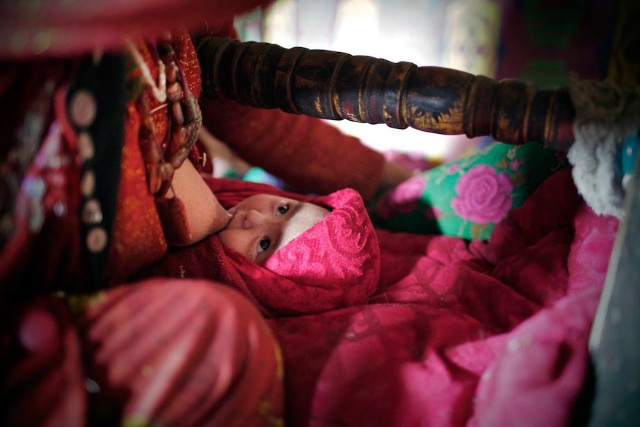
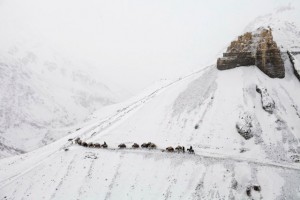
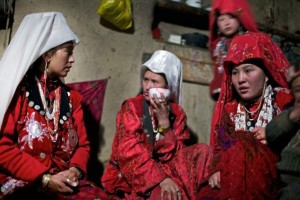

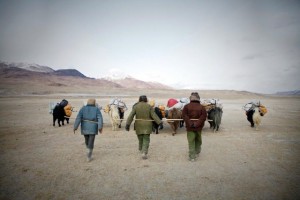
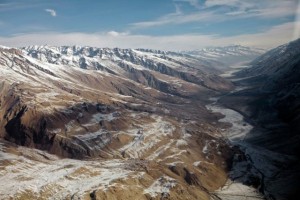
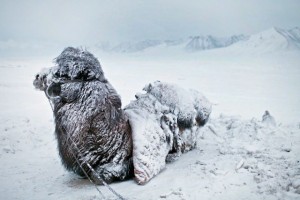
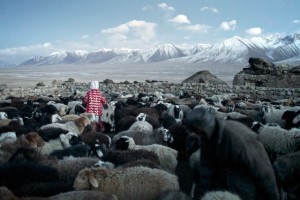
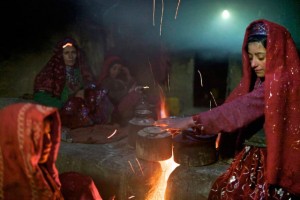

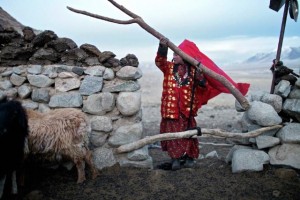
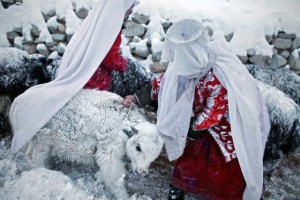
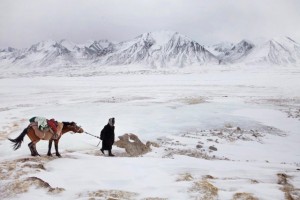
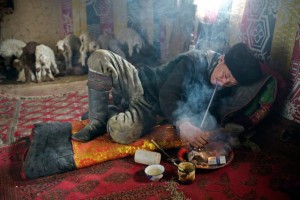

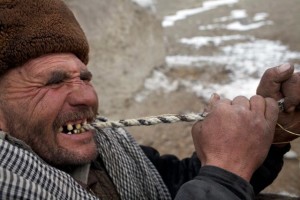
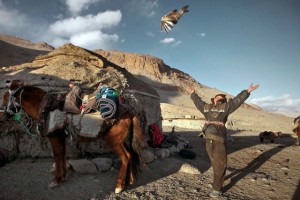
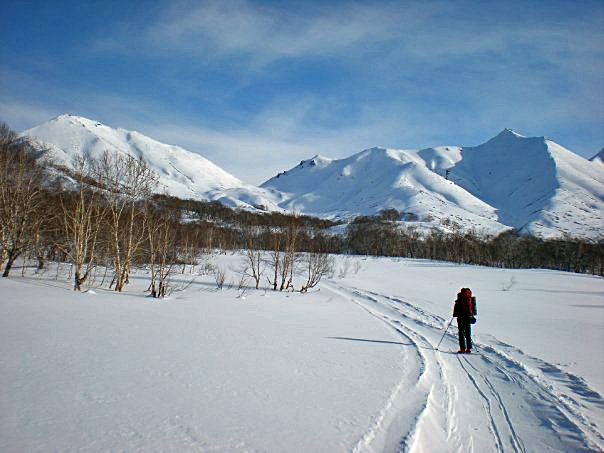
Speechless. An amazing article and amazing journey.
Well done for the winter adventure, few would brave to do it! Good ethnographic study. There was one very good academic article/book on the Kyrgyz in the Pamirs.
In the past these used to be their summer grazing lands, just like the Kyrgyz elsewhere (in Kyrgyzstan or in China) they were moved out of their winter quarters, displaced by Russian settlers and fear. This drove them to more inhospitable lands – which has previously been a strategy of survival – to seek temporal refugee in the summer pastures, which though turned out to be permanent. Please note their settlement in the Pamirs is not a century-old phenomenon, it is something that can be reversed if borders are unlocked. Also they cannot possibly be nomads if they are locked on one permanent place no matter how small or big it is. Second comment is that they ‘survive entirely on their livestock’ – this has never been done in history, they still need to exchange goods to acquire other goods, tools and food.
I find amusing the fact they want $100 for each vaccinated child. But this should not come as a surprise, they fled the Russians/Soviets out of similar fears: their lives will be changed (and in that case their lives were indeed changed).
Dear Yuri, great comments – you are right – Afghan Kyrgyz are technically semi-nomads. They do use about 4 camps a year. It is said that the Afghan Kyrgyz have lived in the Afghan Pamir for about 150 years. Prior to this they lived in Tashkurgan area and/or Tajik Pamir. Some high pastures were used in the past by Wakhi herders, now by Kyrgyz.
And yes, they do rely on flour and other necessities from bartering their yaks with Wakhi in the lower valleys (mainly Chapursan at the shrine of Baba Ghundi and Sarhad, Afghanistan).
All best,
Matthieu
Beautiful but scary, I have not been there but I passed salang in afghanistan, and last week we were stop in the top of the mountain under snow storm which was scary. Two years ago 170 died in just one day of snow storm. The nature is beautiful but mountains are really scary!
Here´s a teaser film wise from the upcoming documentary, see http://vimeo.com/23123040
Wonderful summary and very accurate. We visited in July of this year and found the Krygyz friendly yet quite isolated and cautious. We enjoyed seeing their homes and visited some of CAI’s schools. We heard rumors that the Chinese want to build a road through the Walkan and wondered if that would help or hurt this unique culture.
Looking forward to the film.
The Kyrgyz area a wonderful people. I spent 4 years in Kyrgyzstan and loved every minute of it. I fist heard about the Kyrgyz in the Wakhan corridor about a year before I left. I applaud your efforts to tell their story. Kyrgyz are proud and fiercely independent, that is one reason why it is so hard to convince them to change where they live. I hope one day I will have the chance to visit that area and meet with them.